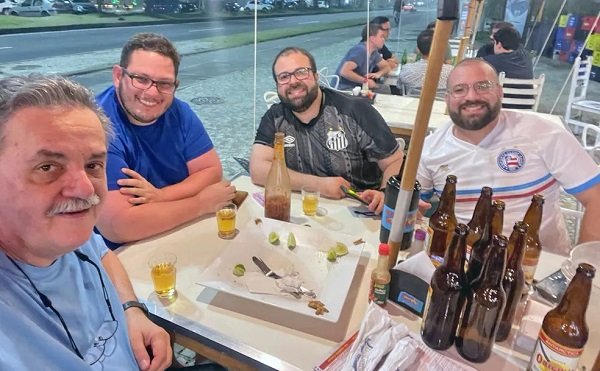The number of violent deaths in Brazil fell by 4% in 2023 compared to 2022, according to the final edition of the periodic survey carried out by the G1 Violence Monitor. The drop is the third in a row and, again, the smallest in the historical series (started in 2007) of the Brazilian Public Security Forum (FBSP), g1’s Monitor partner.
This Content Is Only For Subscribers
To unlock this content, subscribe to INTERLIRA Reports.
The survey counts victims of intentional homicides (including femicides), robberies followed by death, and bodily injuries followed by death. Deaths resulting from police violence do not count.
108 victims per day
In 2023, Brazil recorded 39,492 violent deaths, which represents an average of more than 108 victims per day. In 2022, the total was 41,135 violent deaths, or 113 per day.
The drop was driven by the states of São Paulo, Pará, and Bahia – which, together, account for 53% of the 1,648 fewer deaths recorded in 2023 – but was spread across the country.
Drop in most states
The reduction was widespread: the majority (21) of the federation units recorded fewer murders in 2023 than in 2022. Five (Amapá, Pernambuco, Rio de Janeiro, Minas Gerais, and Maranhão) had an increase, and one (Ceará), had stability.
Index per 100,000 inhabitants
The murder rate per 100,000 inhabitants in the country also fell, from 20.3 in 2022 to 19.4 in 2023. The number was calculated based on the Brazilian population in 2022.
Despite the improvement
Despite the improvement, the country still has one of the highest homicide rates in the world (in 2021, we had the highest in the world, according to a United Nations study released in 2023), and major regional challenges in combating violence – there are more units of the federation (19) with rates above the Brazilian average than bellow (8).
São Paulo and Bahia
With 6.7 deaths per 100,000 inhabitants in 2023, São Paulo continues to have the lowest rate in the country and recorded a decline compared to the 7.1 recorded in 2022. Bahia, despite the drop, has the 5th highest rate, with 34.3.
Biggest decrease
The biggest percentage drops occurred in the states of Sergipe (22.6%), Tocantins (19.8%), and Rondônia (14.5%) – all of which have death rates per 100,000 inhabitants higher than the national rate, respectively 20.7; 23.4; 28.
Rio de Janeiro
Rio de Janeiro had the greatest increase among the states – of the 654 additional deaths – and the absolute increase of 7.4% in deaths represents the reversal of a five-year downward trend in the state.
Pernambuco
The second biggest increase is that of Pernambuco, which had 183 more deaths in 2023 compared to 2022. The state, which is home to less than 5% of the Brazilian population, accounted for 9% of violent deaths (3,518) that occurred across the country in 2023.
Amapá
Amapá had the biggest percentage increase – with 110 more deaths, homicides in the state jumped 49.5% in 2023. As with Pernambuco, the state’s share of the country’s total murders is higher (0.8%) than its representation in the total population (0.4%). The two states have the worst death rates per 100,000 inhabitants in the country, with 45.3 and 38.8, respectively.
Analysis:
The number of homicides in Brazil fell in 2023, marking the third consecutive year of decline. Furthermore, the drop in the homicide rate per 100,000 inhabitants, from 20.3 in 2022 to 19.4 in 2023, signals an improvement in the national security outlook. However, the country still faces significant challenges, maintaining one of the highest homicide rates in the world.
It is worrying to note that some states, such as Rio de Janeiro, Pernambuco, and Amapá, presented alarming numbers. Rio de Janeiro, for example, recorded an absolute increase of 7.4% in deaths in 2023, reversing a downward trend observed over the last five years.
Part of this increase in violent deaths can be attributed to disputes between criminal groups for control of territories, especially in the city of Rio de Janeiro. In 2023, the Red Command intensified attacks on communities dominated by militias in Jacarepaguá, West Zone. The murders occurred during invasions, shootings, and in the days following the conquest of communities, when family members and associates of previous criminal groups were targeted by the gangs.
The conflict between factions is also evidenced in the murder of three orthopedic doctors in Praia da Barra da Tijuca, in October. According to the police, one of the doctors, Perseu Ribeiro Almeida, was confused by the traffickers with the militiaman Taillon de Alcântara Barbosa, who was arrested days later. The following morning, the possible executioners were found dead in two vehicles.
Another important point, highlighted by experts, is that the presence of more police on the streets does not necessarily help to reduce violence. Both Amapá and Rio de Janeiro have more military police officers per inhabitant than the national average, which is 2 per inhabitant. Often, it can be the opposite: more police, and more violence. Amapá, for example, a state that has proportionally the largest police force in Brazil (4.2 military police officers for every thousand inhabitants), leads the ranking of Brazilian homicides (45.2 deaths per 100 thousand). Santa Catarina is at the opposite extreme: it has the lowest police force in Brazil (1.3 PMs per thousand inhabitants) and the second lowest national homicide rate (7.9 per 100 thousand).




